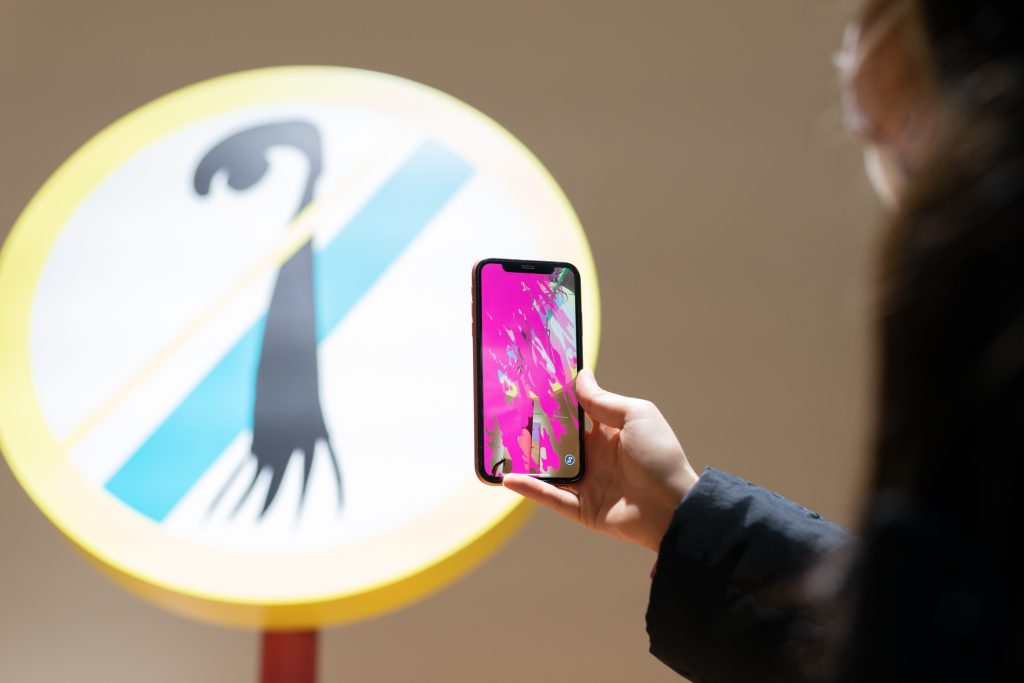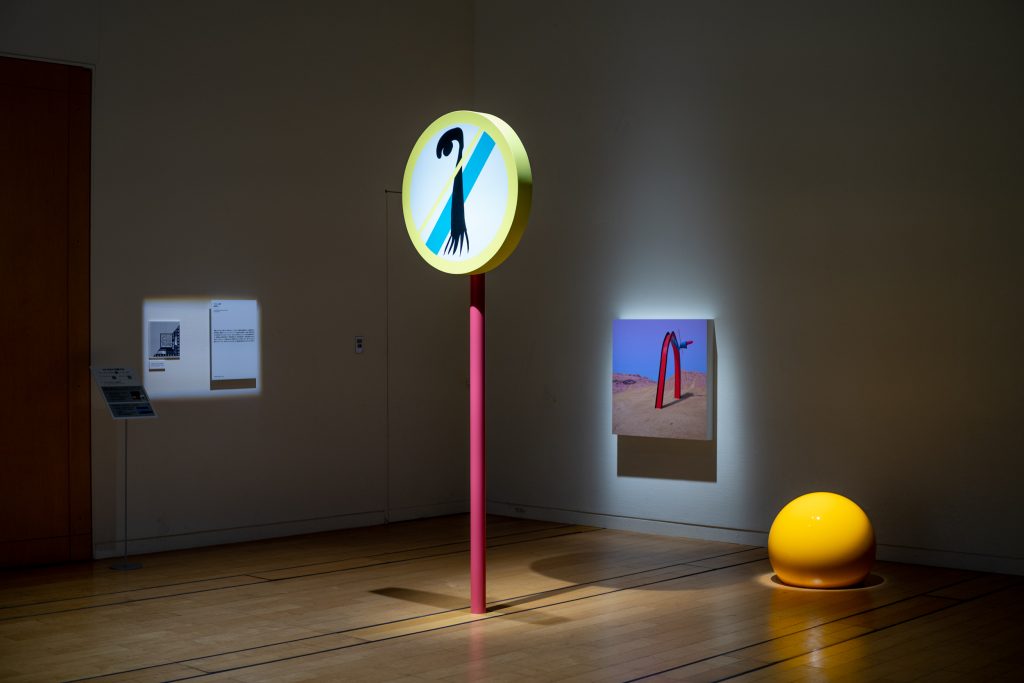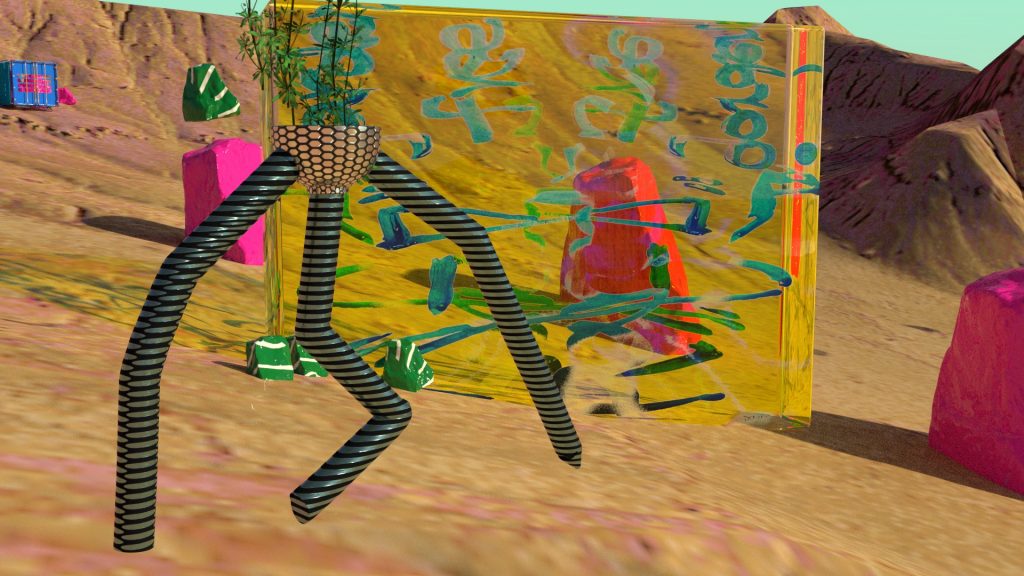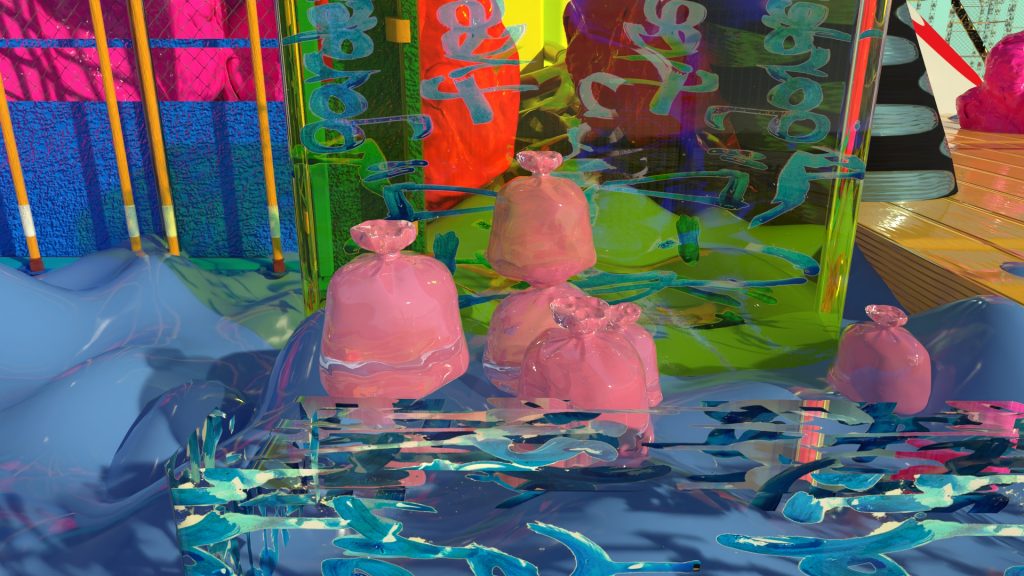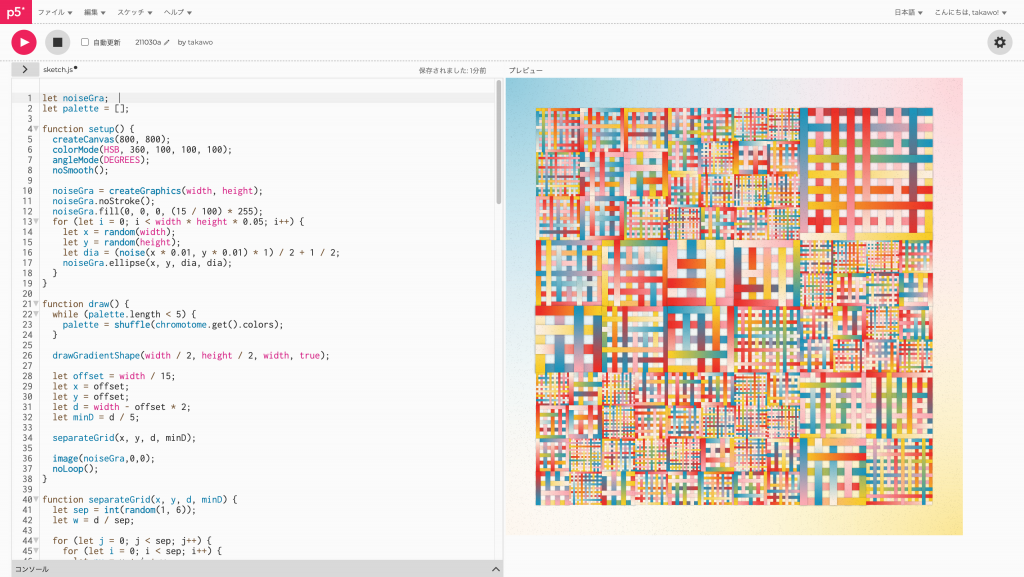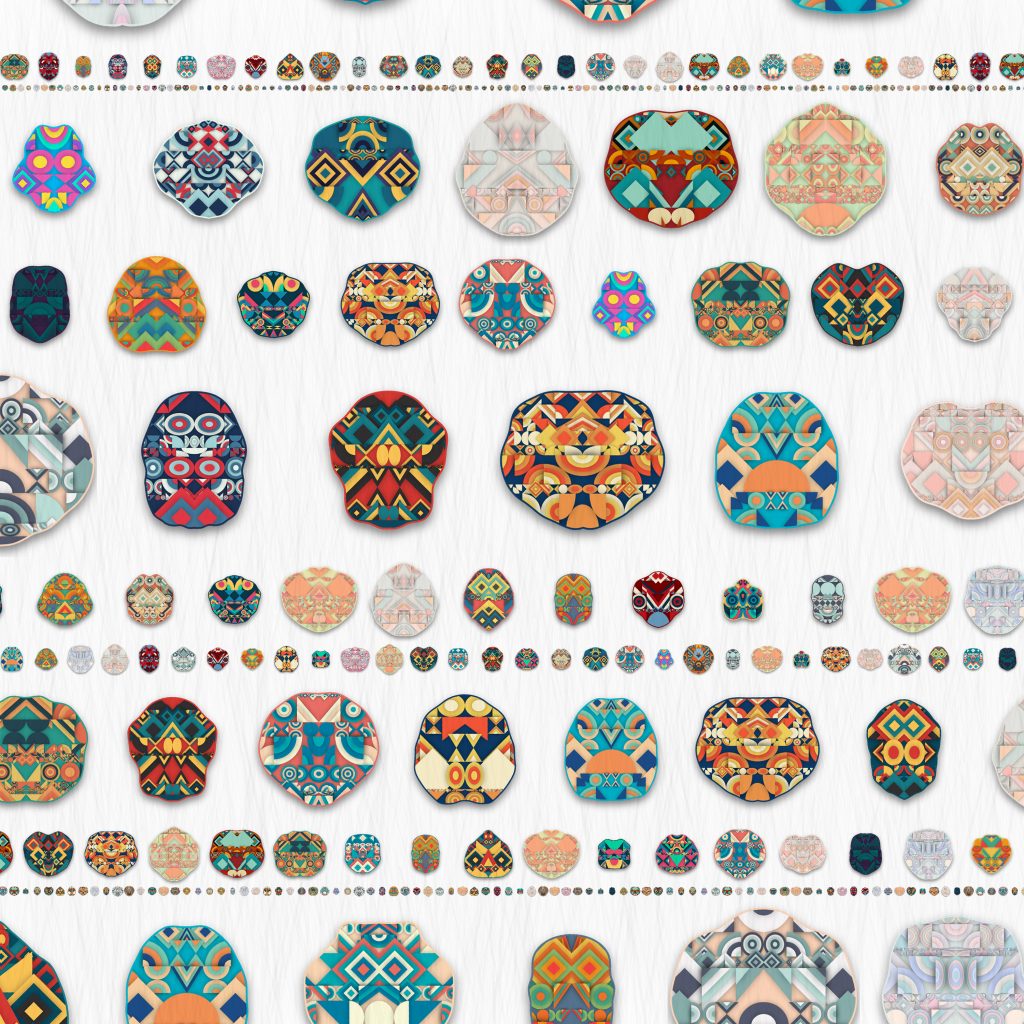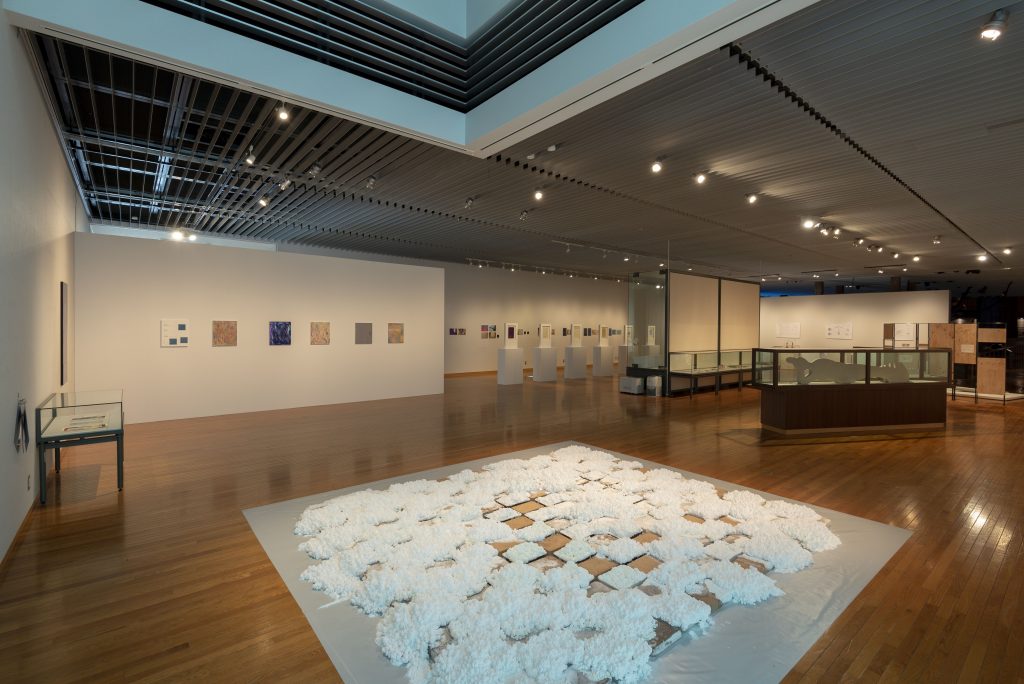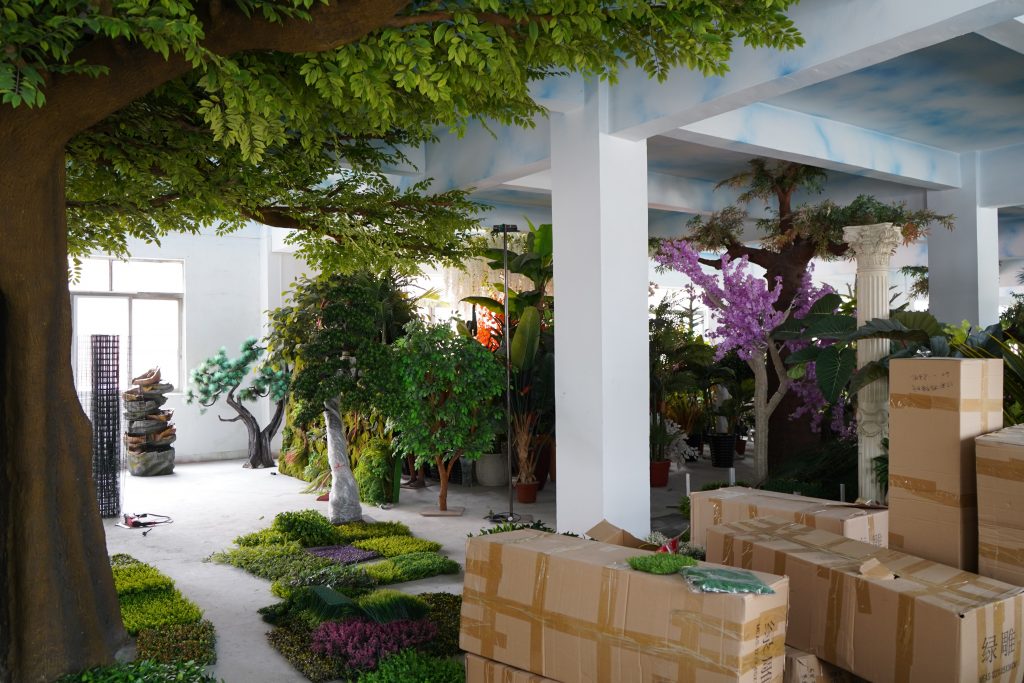Using CG, animation, spatial expression, and AR, Asako Fujikura has been expressing extremely colored, disorderly, and dry urban spaces. In her works, artificial objects that act as if they are living organisms, a world apart from their original role and purpose of production, simply construct pure landscapes. As I enquired about Fujikura’s background in creating a world of “artificiality versus nature,” a world without human subjective distinction or time axis, keywords such as “unity” and “harmony” repeatedly came up.
When I saw your profile, it was curious to see that you majored in Persian at Tokyo University of Foreign Studies. What aspect of Persian culture were you interested in?
I’ve always liked looking at pictures of religions and architecture in arid regions, and I was interested in the contrast of traditional dwellings and domed buildings made of a combination of circles and squares on plain land. I wanted to learn about the culture, history, and religion that shaped these structures.
Where does this interest in the “combination of simplified shapes” itself come from?
I grew up in the suburbs of Saitama Prefecture, where, if you ventured out a bit, there were nothing but rice paddies. I used to see huge infrastructure like highways on top of the flat rice fields on my way to school, and it was like an original landscape. I may have seen the image of “huge structures on flat land” and “simple on the outside, complex on the inside” from those days, in the dwellings and mosques of the Muslim community. From a young age, I think I had a habit of looking at the land and the objects standing on it, paying attention only to their “shapes.” I liked to look at them with such concentration that my sense of self disappeared, and I often found myself in a state of mind where only the object and I existed.
After that you went on to major in media images correct?
My university professor was a specialist in German philosophy, and as I was exposed to a wide variety of ideas not limited to the Islamic world, I realized that I was studying ideas in order to understand visuals. I began to think about myself, the land, and the landscape in which the building is located… I wanted to think about these things in a cleaner way.
By the time I graduated from university, I was studying fantasy literature, and my thesis dealt with a story in which the main character, a Westerner, was fascinated by the idea of yoga, and as he practiced one of the secrets of yoga, aiming for a state in which “the ego disappears when the body reaches a certain level,” his “self” really disappeared. I am also interested in the idea of “merging with the world through the disappearance of the ego” as seen in mysticism, and I submitted a video to consider this theme for the entrance exam of the University of the Arts. I really enjoyed creating visuals in a way that allowed me to think as well as create.
In your work, the condition of “things created by humans moving beyond our control” is frequently dealt with.
Materials such as bridges, pillars, and roads are obviously stronger than my body and will last longer in this world than I will. Perhaps it’s similar to the feelings that people have had about nature since ancient times, but I have a feeling of awe mixed with longing for things that are out of my control. It’s almost spellbinding. For me, the road is not just a road, it is something that is stronger than me, something that may eventually see something that I cannot.
Recently, more and more artists are expressing their ideas from the perspective of ecology, and this is because it is no longer possible to grasp various problems that occur in reality or predict the future through a simple dichotomy such as “the artificial realm and the natural realm are completely separated.” I think it is important to understand the state of “things” themselves, not as a single view as an urban function, but as a state of being with mass and hard texture.
Understanding the state that things are in?
Yes. One of my motivations for expressing the way I draw in my works is to convey the importance of understanding the “state of things.” On the other hand, there is also the aspect of “fulfillment.” The scenes depicted are not dystopian to me, but rather I create them with a sense of pleasure. For example, in a harbor, I am surrounded by exterior lights, water surfaces, and man-made structures like warehouses. When you are in such a place and look at the light from the street lamps, don’t you feel a moment of great… satisfaction?
I don’t know. I guess it depends on how you define “fulfillment.”
It may be the same thing as yoga in the fantasy novel. Being yourself is a restriction for the body. It’s a state of forgetting that. As you look at the light of a street lamp, your thoughts about yourself disappear. At the same time, my ego and awareness of the existence of the viewpoint disappears, and I, as the one who recognizes the scenery, become completely integrated with it. At the same time, my ego, which recognizes the scenery, and my awareness of the existence of the viewpoint itself disappears.
In that state you can be free of worries right.
That’s right. Worries and memories, too. For me, the moment of “fulfillment” appears when an object is outside of time, regulations, and laws that it is clad in as part of the social landscape. To give a clear visual explanation, in a desert, there are two cities, A and B, that operate under different time and laws. The distance between these cities is endless, but when certain conditions are met, a moment is created where a new world, C opens up, where the pillars in A and B can exist on the same layer, and can be omnipresent in the same tone. I aim to create images of this C world.
The work can only be created from what I have seen so far and from the scope of my knowledge, but the work itself can transcend time. I hope I can create a view that transcends time. Whether it is in the past or the future, I would like to deliver it to people of different times.
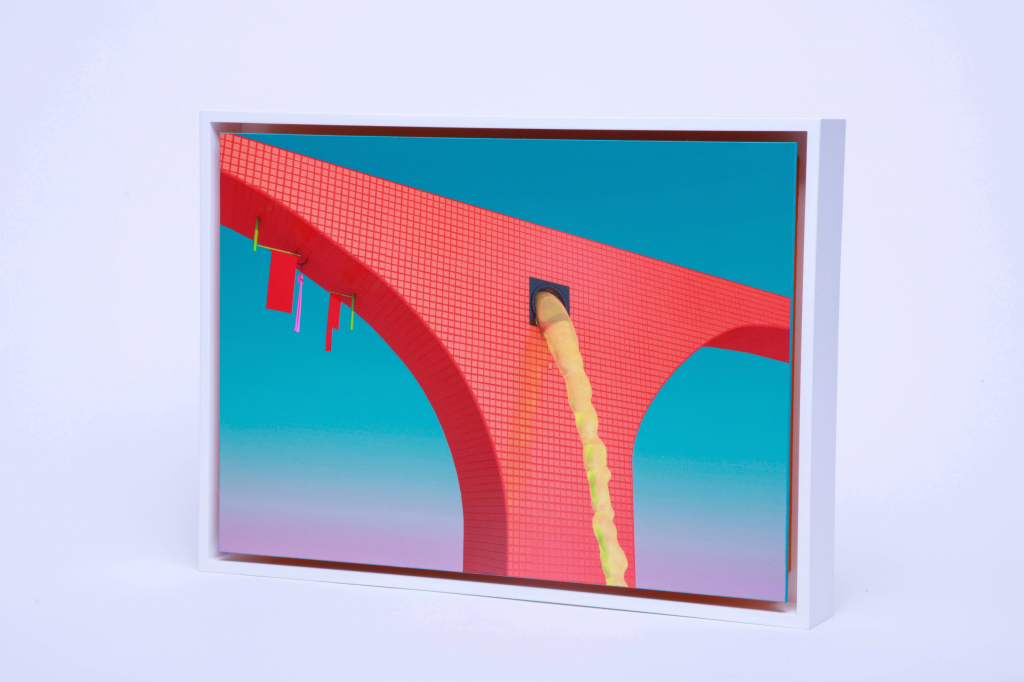
Is it possible for you to escape your ego by looking at your finished works?
No, it’s more like I’m creating objects by placing them sensitively in order to achieve a state of unity or harmony. When I remove the reasons and functions that gave birth to each material and place them in a parallel and flat state, the relationship between each somehow becomes appropriate. The reason why I use CG is because it is suitable for expressing a flat and clean state.
So it’s not a dystopia at all. Even if there are artifacts that run amok like bugs in a system.
That’s right. I get a lot of comments about the dystopian aspect, or bewilderment at the eccentricity, but it’s the opposite of that. I see having bugs as a flat thing.
When “unity” or “harmony” appears, is it possible for you to create an ideal state inside yourself?
Yes, it is. I feel that this is the happiest and most correct state of mind, and I think it is also necessary when looking at society. I think it is important to put aside the values that have been instilled in us in our own lives and see others as standing on the same ground.
On the other hand, I also hope that there will be moments when we “return” to our bodies. This may be a human instinct, but I would like to complete my life as a human being. On top of that, I have an affinity and attachment to artifacts and structures. So, there is me with my body, artifacts with mass, and other life forms, and there is a moment in this place (world) where the individuals are independent of each other, but in some way they go back and forth between each other’s states, or recognize another layer that merges. I hope this is the case.
